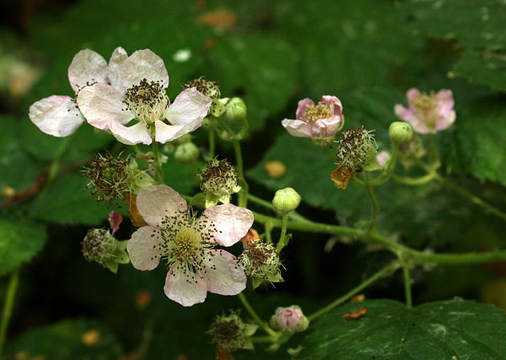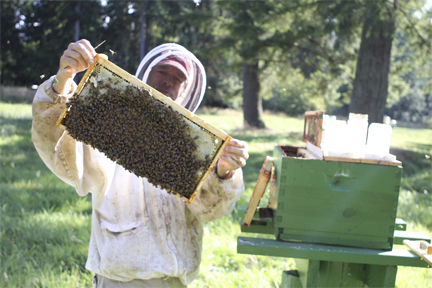Brookfield Farm is pleased to bring you Stillaguamish River Wildflower Honey from Northwest Queens, Arlington Washington
The Stillaguamish River Wildflower Raw Honey from Mark Adams’ bees (NorthwestQueens, Arlington) combines the bold flavor of Japanese Knot Weed with the delicate flavors from the nectar of blackberries, clover, and the myriad of wildflowers that thrive in these upriver meadows.
Mark’s 2020 honey is nearly black in color. The invasive Japanese Knotweed is one of three flowers in Washington that produce black nectar and, thus, black honey.
Mark’s hives are all treatment-free (not even one essential oil) and are placed “as far away as possible from agriculture,” he notes.
His choice of bee yard locations is part of his commitment to keeping his hives as free from chemicals as possible. The upland meadows of the Stillaguamish River meet his high criteria.
The river, named for the local First Nation’s people, originates in the high Cascades. It begins amid talus and cedars as it travels down the western slopes. As the river gains depth and breadth, it becomes the breeding grounds for several species of salmon as it tumbles past fields of wildflowers.
This land, far from agricultural chemicals, reflects Mark’s commitment to breeding queens.
His work aims for bees that are adapted to the northwest’s damp environment and are resistant to pests, diseases, and pathogens; and can thrive without any treatments.
“I’ve never treated for mites, ever,” Mark points out. “I still have mite treatment strips; the original ones. It said do not touch, and I thought ‘I don’t want to put these in the hives’”
Mark started keeping bees nearly 50 years ago “…back in the day when you could leave them alone.” A swarm landed on a fence post near his family’s home and “…we wanted to keep it, but knew nothing about bees. So we called a guy who had some bees…to some degree I’ve been keeping bees ever sense”
About 18 years ago, he “got serious about the genetic stuff.” Mark sites his inspiration being the poor quality of bees he was buying. “I’d buy a package and they’d be dead in a year. Then I got a swarm. They were big and strong. I wanted more hives like that. I talked to a bee breeder and that started everything.”
It was not easy sailing. Mark admits that at first nearly half his hives died. His core breeding stock became the survivors. Today he runs around 100 hives of bees that are genetically mixed: a bit of New World Carniolan, Italians from the Pol-line, Russians, VHS from Bob Danka in Baton Rouge, Greg Hunt’s “ankle biters” from Purdue, and other genetic lines in which he sees promise.
“I have some bees that are incredible for fighting off the mites. The whole population is not of equal greatness. There are little pockets of the mite levels too high. I don’t think I’m alone in that camp… I really feel that I’m making a difference, I’m not saving the world, but I might be contributing to saving the bees.”
Mark continues to experiment, observe, learn, and explore new solutions: a process that he feels applies to both queen rearing and beekeeping in general. “You’ve got to be capable of learning new things, every day you see new stuff you need to apply new things to. All your solutions of the past will not work. It’s taken years to get to where I can look at something and say, oh, I’ve not seen that before. To come up with a good way of grafting and cell building to produce top notch queens. You have to be able to solve lots of problems with workable answers you can’t be afraid to try.”





![Stillaguamish River Map by By National Oceanic and Atmospheric Administration (NOAA) [Public domain], via Wikimedia Commons](http://pacificnorthwesthoney.com/wp-content/uploads/2015/12/StillaguamishRiverMap.jpg)